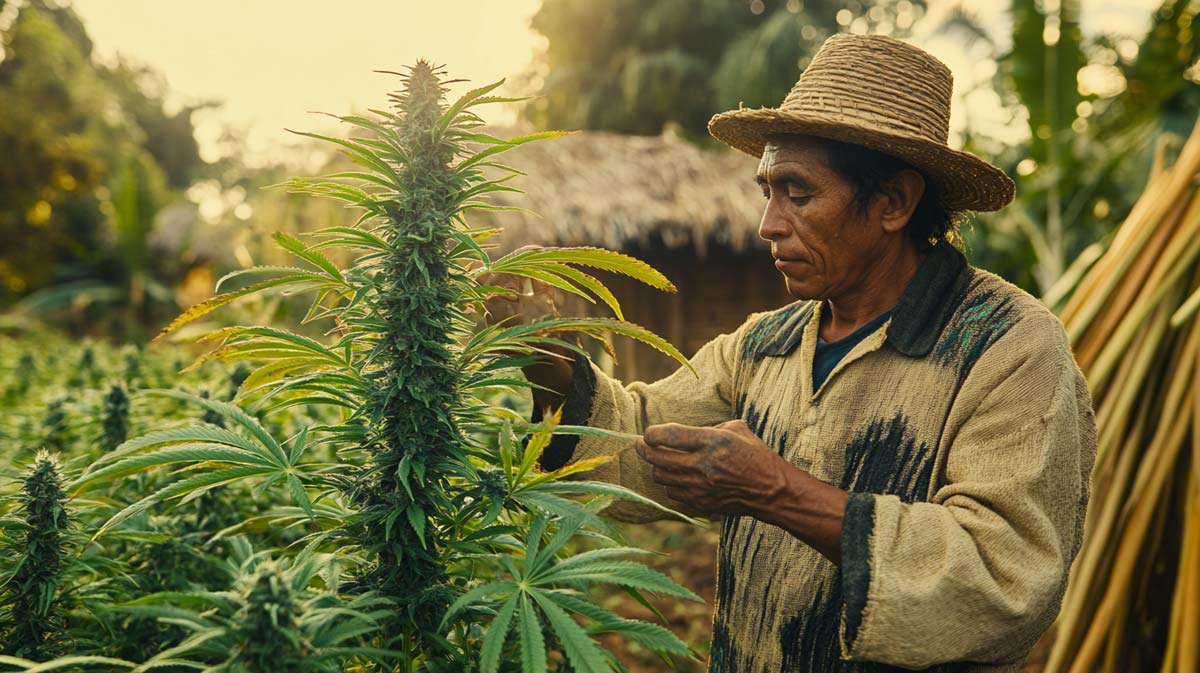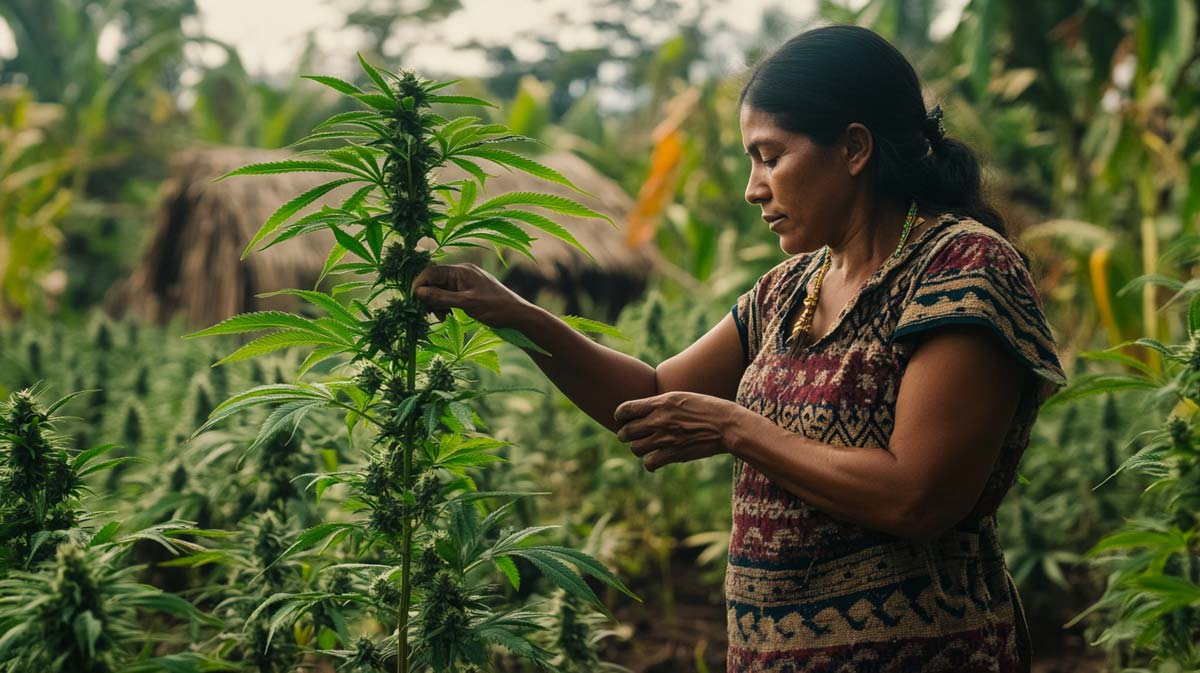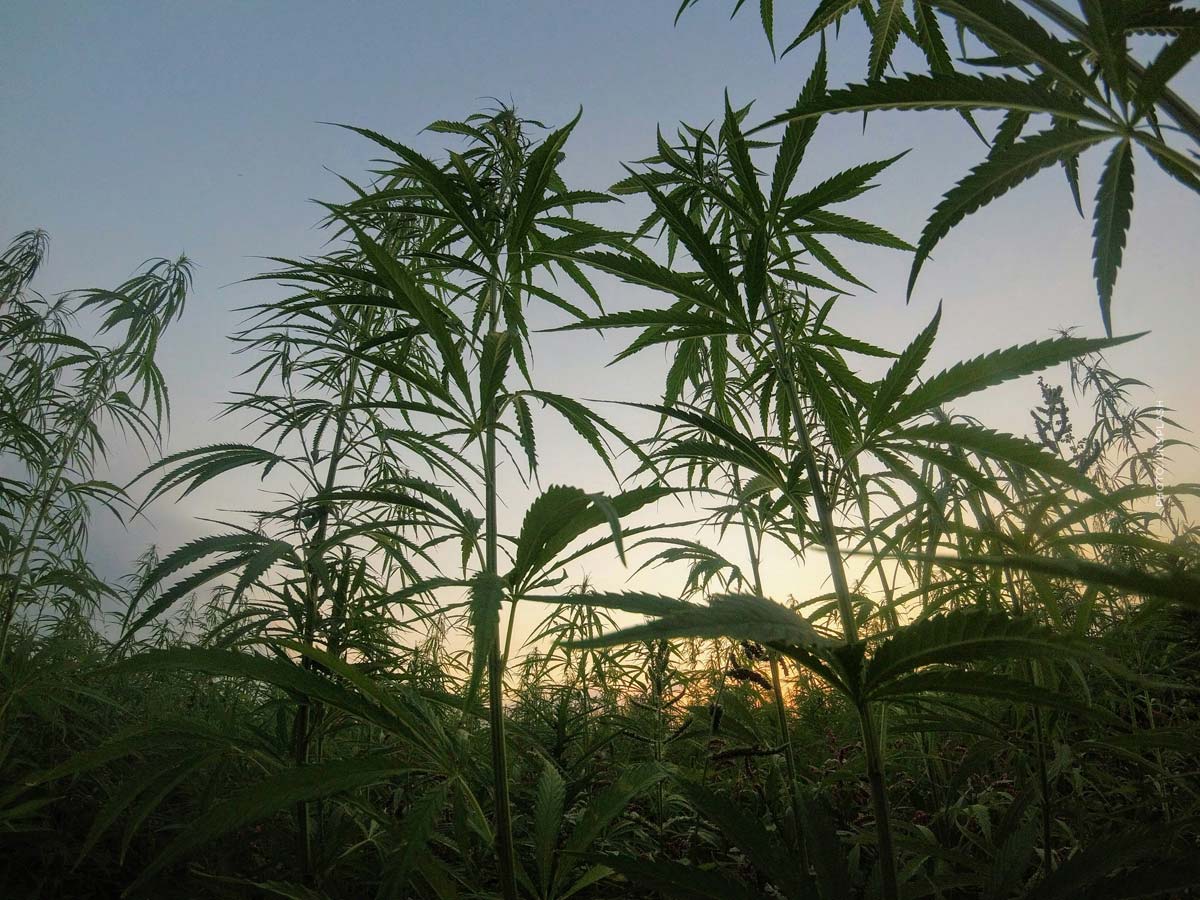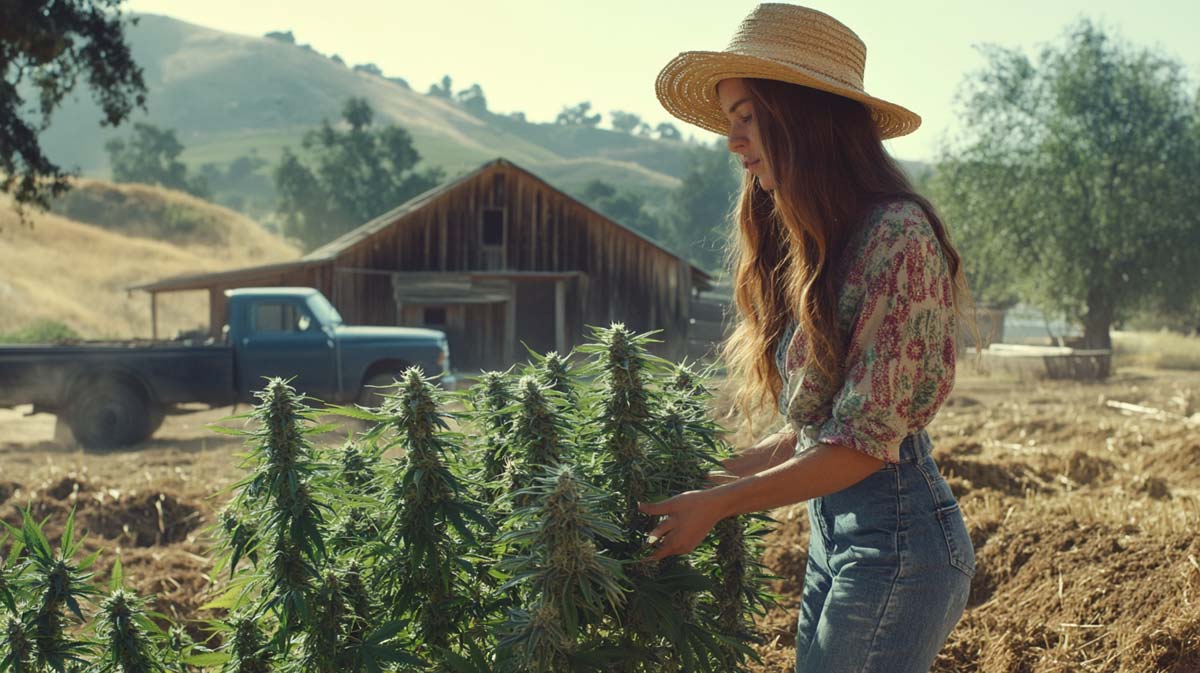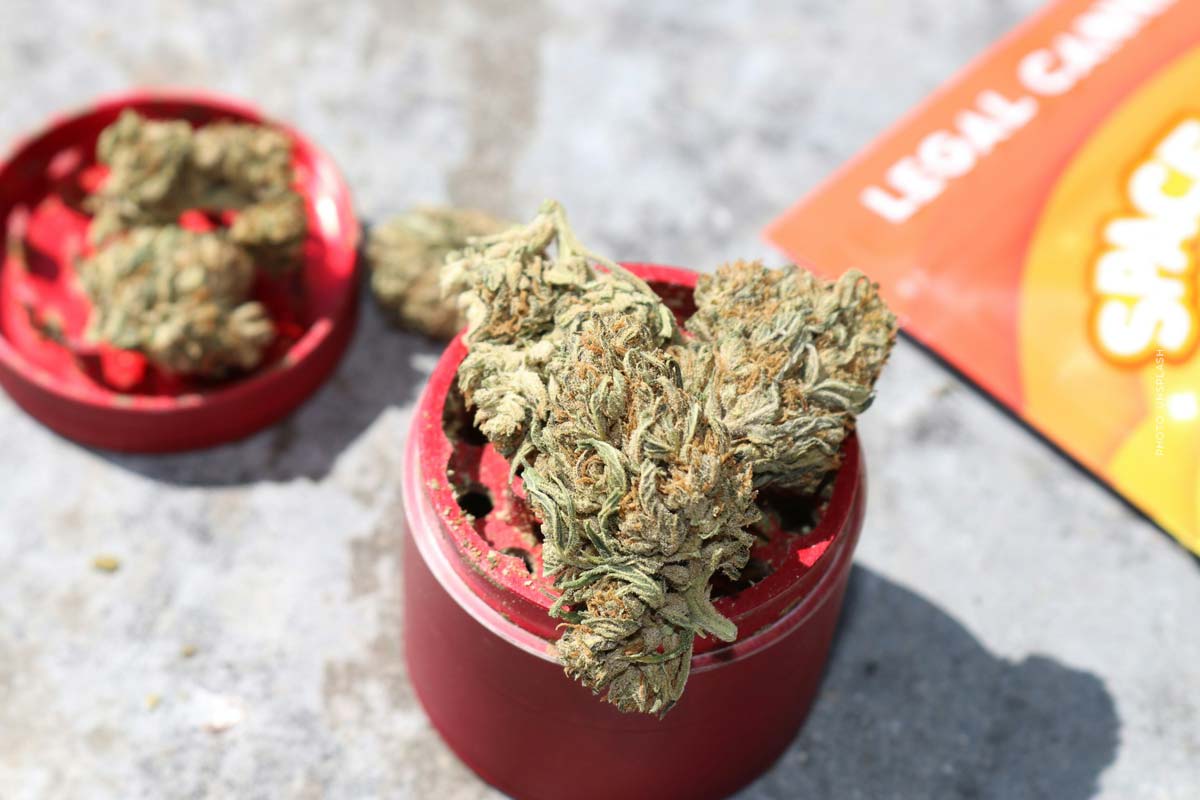Sativa, indica, hybrid & ruderalis: the difference between cannabis strains
Four types of cannabis, four different effects – but which one is right for you? Find out what distinguishes sativa, indica, hybrid and ruderalis and why each strain is unique! Learn more about cannabis strains here.
Sativa, Indica, Hybrid & Ruderalis 𥦠Super briefly explained
Cannabis comes in four main varieties, which differ in growth, effect and origin. While Sativa originates from tropical regions such as South America, Thailand and Africa and is known for its activating, creative effect, Indica has developed in the mountainous regions of India, Pakistan and Afghanistan and provides deep relaxation. Hybrid strains, bred from the 1960s onwards in the USA, the Netherlands and Canada, combine the properties of sativa and indica for customized effects. Ruderalis, the most resilient species, grows in Russia and Central Asia, remains small, autoflowering and is often used for medicinal purposes.
Which variety can do what?
- Sativa – Tall-growing plant from tropical regions, stimulating effect, ideal for the daytime.
- Indica – Compact and bushy, developed in mountains, calming and full-bodied.
- Hybrid – mixture of Sativa & Indica, versatile effects, selectively bred.
- Ruderalis – Robust wild variety, small, autoflowering, low THC content.
Source: CannaZen / Cannabis strains
Sativa from South America, Thailand and Africa
Sativa is one of the oldest known cannabis strains and was cultivated over 5,000 years ago. Archaeological finds document its cultivation in South America, Thailand and Africa, where it has adapted optimally to the tropical climate. Due to the long growing periods in these regions, sativa plants developed a tall, slender structure with long, thin leaves. Their ability to absorb a lot of light makes them ideal for sunny locations.
In contrast to Indica, which has developed more in colder regions, Sativa needs more time to grow and flower – often up to 14 weeks. Its plants reach heights of up to 5 meters and are more resistant to mould due to the open flower structure. While indica tends to provide deep relaxation, sativa offers a clear, cerebral effect. Ruderalis, on the other hand, is smaller, autoflowering (automatic flowering after around 60 days) and contains less THC.
Sativa is known for its activating effect, which increases creativity and productivity. It is often used by artists, musicians and thinkers as it stimulates the mind and lifts the mood. Its invigorating effect makes it ideal for daytime use and can even help with depression and chronic fatigue. Many medicinal cannabis strains with a high THC content are derived from sativa genetics.
Sativa from South America, Thailand and Africa
- Cultivated for over 5,000 years
- Grows tall, narrow leaves, long flowering period
- Invigorating, stimulates creativity, ideal for the day
- Often grown in tropical climate zones
Indica from India, Pakistan and Afghanistan
The Indica variety has its roots in the mountainous regions of India, Pakistan and Afghanistan and was cultivated over 3,000 years ago. In these barren, dry highland regions, Indica had to adapt to short summers and cold nights. As a result, it developed a compact, bushy structure with dense flowers that are rich in resin – a characteristic that makes it particularly valuable for the production of hashish, which has been produced in these regions for centuries.
Compared to Sativa, Indica grows faster and flowers within 6 to 9 weeks, which makes it particularly attractive for cultivation. It remains relatively small with an average height of 1.5 meters and requires less space. While Sativa has an activating, cerebral effect, Indica provides deep physical relaxation and is often used for medicinal purposes. Ruderalis, on the other hand, has hardly any psychoactive properties, but is used in hybrid strains to add autoflowering capabilities.
Indica is particularly known for its calming and pain-relieving effects. It helps with sleep problems, muscle tension and chronic pain. Many patients with anxiety disorders or insomnia prefer indica, as it has a relaxing effect and allows the body to calm down. Due to its high CBD content, it is also used extensively in medical research.
Indica from India, Pakistan and Afghanistan
- Developed in the mountainous regions of Asia
- Compact, bushy, short flowering time
- Strong physical relaxation, ideal for the night
- High resin content, often used for hashish production
Hybrid from USA, Netherlands and Canada
Hybrid cannabis strains are a relatively modern development and were specifically bred from the 1960s and 1970s onwards. With the global spread of cannabis, breeders in the USA, the Netherlands and Canada began crossing sativa and indica strains to combine the best characteristics of both plants. These genetic crosses made it possible to create strains with specific effects – for example, invigorating but not too intense, or relaxing without making you tired.
Hybrids differ greatly depending on the strain: sativa-dominant hybrids promote creativity and focus, while indica-dominant hybrids provide relaxation. Balanced hybrids offer the best of both worlds. Ruderalis is often crossed in to give the plants an autoflowering trait, making them particularly easy to care for. While sativa takes a long time to flower and indica remains compact, hybrids can be adapted to different growing conditions.
The effect of a hybrid depends on the genetics. Many modern varieties have been bred to have specific medicinal or therapeutic effects. Some help combat anxiety and stress, others boost energy and creativity. This versatility has made hybrids the most popular cannabis strains of recent decades, both for medicinal and recreational purposes.
Hybrid from USA, Netherlands and Canada
- Purposefully bred since the 1960s
- Combination of sativa and indica properties
- Versatile effect: relaxing or invigorating depending on genetics
- Optimized for different growing conditions
Ruderalis from Russia, Mongolia and Central Asia
Ruderalis is the most original and resilient cannabis species and was discovered over 2,000 years ago in the harsh steppes of Russia, Mongolia and Central Asia. It has evolved in extreme climates where cold temperatures and short summers prevail. These harsh conditions led Ruderalis to develop a unique trait: autoflowering ability (flowers automatically). This means that it flowers independently of the light cycle, which makes it particularly practical for cultivation.
While Sativa and Indica are dependent on the change in day length, Ruderalis begins to flower automatically after just 3 to 4 weeks. The plant remains relatively small at 30 to 80 cm and produces less THC than other cannabis species. Due to its low THC content, it has hardly any psychoactive effect, but is valued for its high CBD content.
Ruderalis itself has little intoxicating effect, but plays a crucial role in cannabis breeding. It is often crossed with indica or sativa to create hybrids with autoflowering properties. This makes it possible to produce robust, low-maintenance plants with a fast flowering time. Ruderalis is particularly popular in the medical sector as it is rich in cannabidiol (CBD), which can help with inflammation, pain and anxiety.
Ruderalis from Russia, Mongolia and Central Asia
- Grows in extreme climates, very hardy
- Small, autoflowering, flowers independently of the light cycle
- Hardly any THC, but rich in CBD, ideal for medicinal purposes
- Often crossed with other varieties to make hybrid varieties more robust
Source: CannaZen / Cannabis strains
